My Basket
Checkout using your account
Checkout as a new customer
Creating an account has many benefits:
- See order and shipping status
- Track order history
- Check out faster
- Home
- Buying a Fence Guide
Buying a Fence Guide
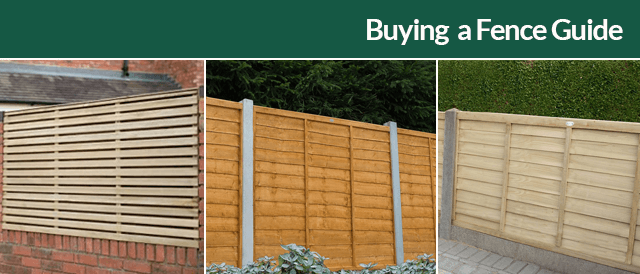

Fencing is an essential part of any garden. Fence panels not only provide privacy and security, but they frame the garden and set the tone for garden design too.
Whether restyling a garden or simply replacing old, damaged fence panels, buying garden fencing for any project requires the understanding of a large amount of terminology. We can help!
As one of the UK’s leading suppliers of fencing and garden buildings, Shedstore are experts in how to choose the best fence panels. Our guide covers all you need to know.
This guide will cover the topics below. Click a topic to go straight to the information you need.
Step One: Choosing Panel Size
Step Two: Understanding Traditional Fence Panel Construction
Step Three: Understanding Decorative Fence Panel Construction
Step Four: Other Fence Types
Step Five: Special Purpose Fencing
Step Six: Understanding Fence Treatment
Step Seven: Gates
Step Eight: Selecting Fence Posts and Accessories
Garden Fencing Delivery
Fence Installation
Contacting Us
Step One: Choosing Panel Size
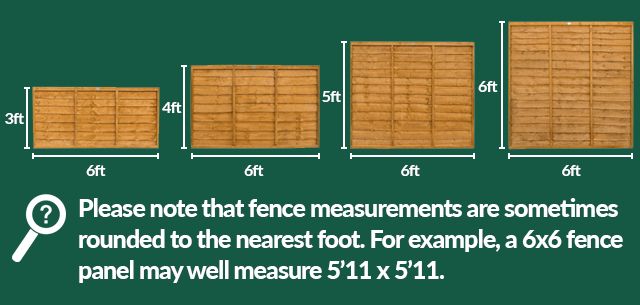

Fence panels have a standard width of 6 feet. They are usually either 3ft, 4ft, 5ft or 6ft high.
3ft and 4ft fence panels are low-level garden boundaries, typically used in front gardens or positioned on top of a low-lying wall. 5ft and 6ft fence panels provide privacy and security, making them the popular choice for back gardens.
Please note that fence measurements are sometimes rounded to the nearest foot. For example, a 6x6 fence panel may well measure 5’11 x 5’11. For precise measurements, always refer to the fence panel’s detailed specification shown on the relevant product page.
Shop by Popular Fence Panel Sizes
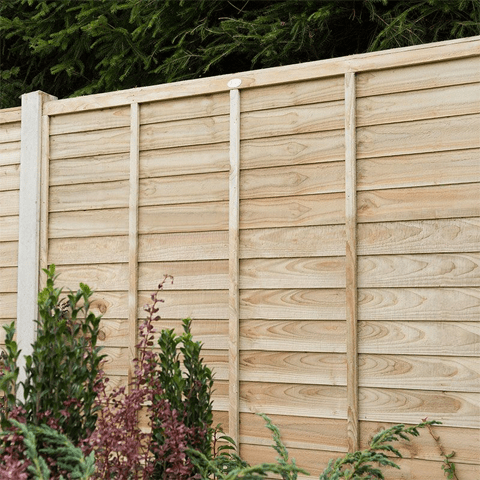

Overlap Fencing
Horizontal boards are attached to the frame in an overlapping fashion and supported by vertical battens. The boards can be straight cut or waney-edged finish. Overlap fence panels are usually the cheapest option.
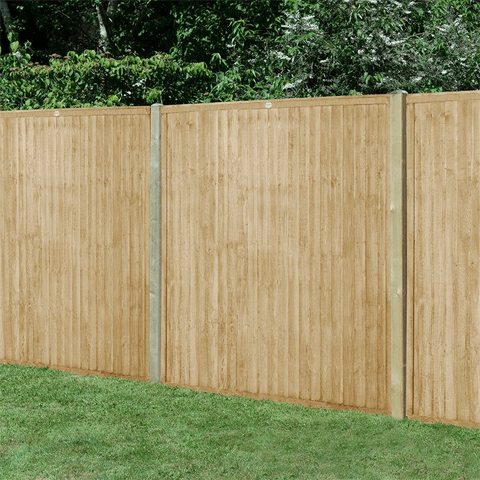

Closeboard Fencing
The vertical boards are supported by horizontal battens on one side. They are also enclosed by a full perimeter frame for added strength. Usually, closeboard fencing uses more battens than the above three options, ensuring an even more robust structure.
Step Three: Understanding Decorative Fence Panel Construction
Decorative fencing provides an effective garden boundary but with an emphasis on aesthetic appeal. It provides a beautiful backdrop to flowerbeds and comes in a range of styles.
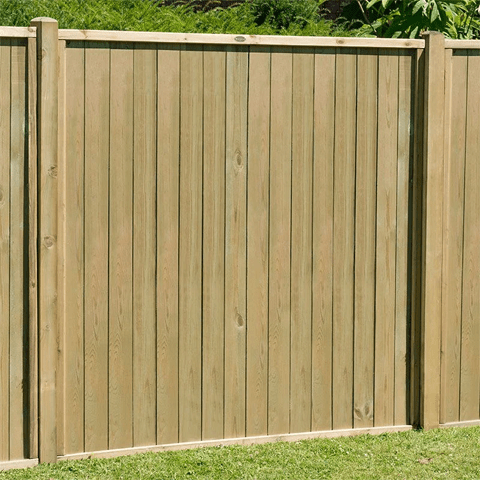

Tongue and Groove Fence Panels
Constructed from thick, tightly interlocking boards within a rebated frame, these high-end fence panels ensure excellent privacy and security.
Tongue and groove panels are very strong and, with their smooth, sleek finish, they are stylish too.
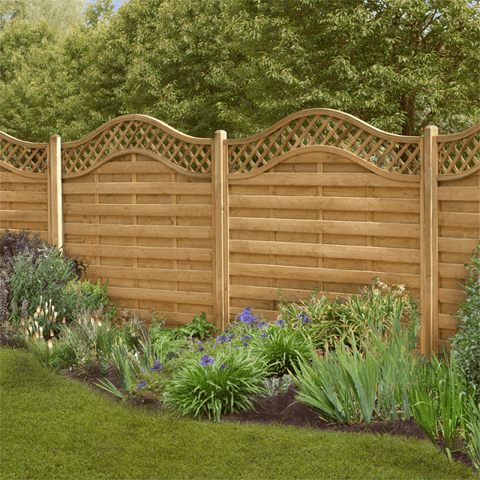

Hit and Miss Fencing
Boards are mounted alternately to the front and rear of the supporting battens. The boards can be positioned horizontally or vertically.
This arrangement means that the fence panels are equally attractive from both sides. It also allows air to filter between the slats, improving the fence’s wind resistance and combining privacy with aesthetic appeal.
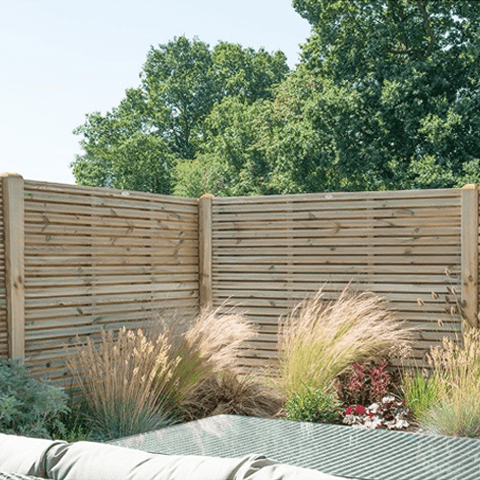

Slatted Fencing
The single horizontal slats are mounted on long vertical battens, with space between each slat. This offers a certain degree of privacy, while allowing natural light to filter through the panels.
Double slatted fence panels have slats mounted to both the front and rear of the vertical battens, so provide more privacy. They have exactly the same appearance from both sides of the fence run.
Slatted fencing is stylish and modern. It comes with a natural finish or a grey-painted finish.
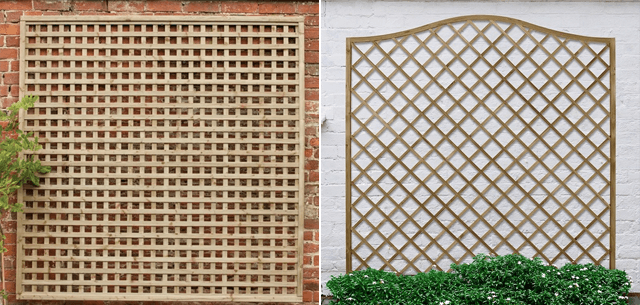

Lattice/Trellis Fences
Lattice and trellis are interchangeable terms to describe the same type of fencing.
Trellis fencing’s criss-cross square or diamond-shaped pattern is ideal for supporting climbing plants. It can be used as a standard garden boundary with an open feel, as a partition within the garden, or mounted on a wall.
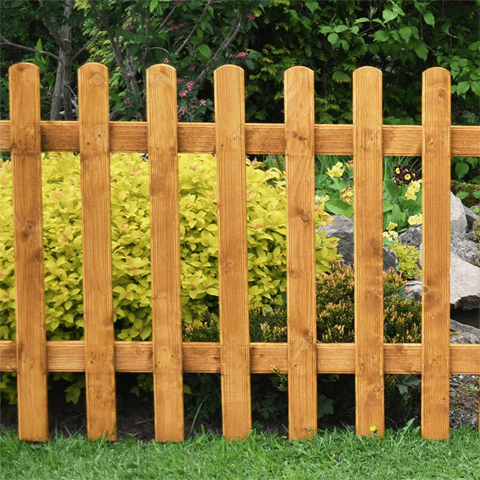

Picket Fencing
A picket fence complements traditional cottage gardens perfectly. It is also a popular choice for front gardens in general.
Picket fencing tends to be low-lying and consists of spaced wooden pales attached to a horizontal rail. It is a simple, decorative way to mark a garden boundary which doesn’t require privacy or security.
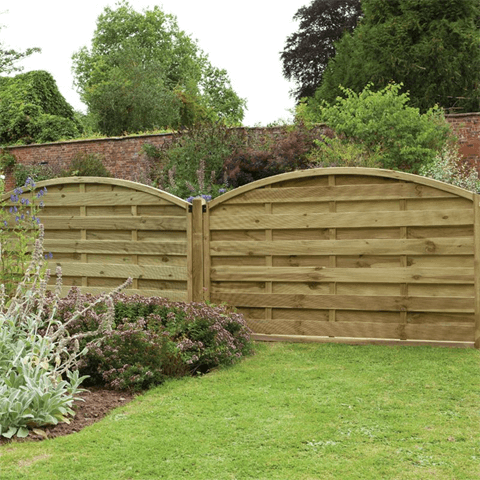

Domed Top Fence Panels
The top of the fence panel has a dome-shaped or wavey-edged finish for an attractive, unique appearance.
The rest of the fence panel can be constructed using many of the above methods.
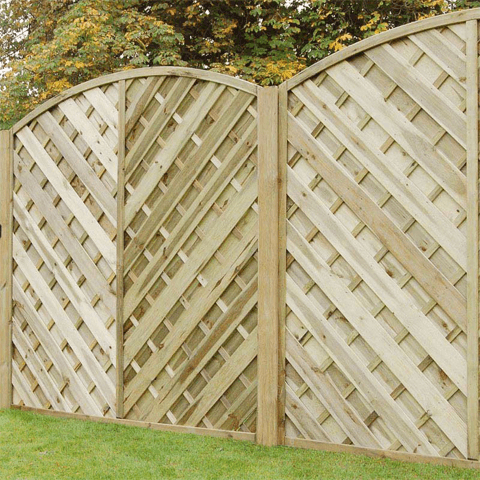

Chevron fence Panels
Chevron fencing is where the boards are attached to the frame diagonally for a decorative V-shaped appearance.
This unique construction adds real wow-factor to any garden.
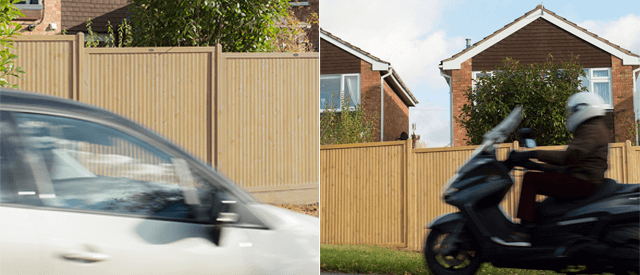

Fence Panels that Prevent Noise Pollution
Noise reduction fence panels are an advanced form of tongue and groove fencing, proven to reduce noise pollution by up to 30dB. They are ideal for blocking out noise from nearby roads, schools and other noisy places.
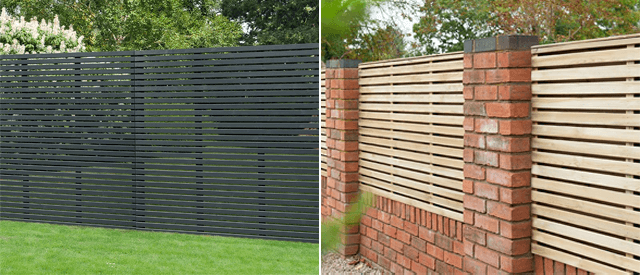

Fence Panels for Windy Areas
Fencing that allows the wind to pass through gaps in the boards, rather than completely press against them, is ideal for windy areas. This is why slatted fence panels make such a good choice.
If extra privacy is required, use solid fencing with longer, slotted fence posts, which allow the fence panel to slide in and be securely screwed into place.
Dip-Treated Fencing
Dip-treatment is where the manufacturer applies a coat of preservative to the wood’s surface to protect it against rot and fungal decay. Although this ensures a decent level of protection, the fence panels will require retreating annually. Dip-treated fencing can usually be recognised by its orangey hue. It tends to be cheaper than pressure-treated fencing but is still often supplied with excellent guarantees of up to 10 years, when supported by annual retreatment.
Pressure-Treated Fence Panels
Pressure treatment involves the preservative being forced deep into the wood, ensuring an unbeatable level of protection against rot and fungal decay. In most cases, this means that the fence panels will not require retreating for up to 15 years, saving time and money. Pressure-treated fencing is paler in colour than the dip-treated alternatives. It tends to be a little more expensive but the 15-year guarantee and lower maintenance requirements are worth the extra cost.
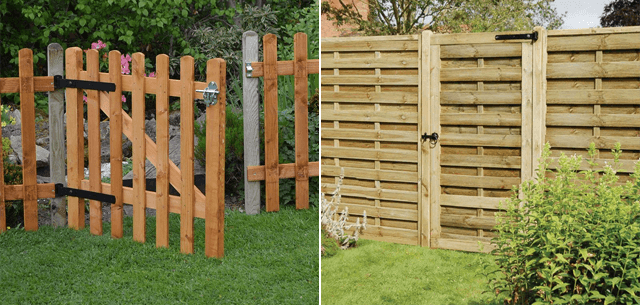

Depending on the fence’s position, a gate may be required to complete the fence run.
Garden gates are invariably 3ft wide. A garden gate used as a side gate for privacy and security will usually be around 6’ or 5’11”, in keeping with the height of the fence. A more decorative lower gate used purely as an entrance point, will usually be 3ft.
A matching garden gate is available for most ranges of fence panels.
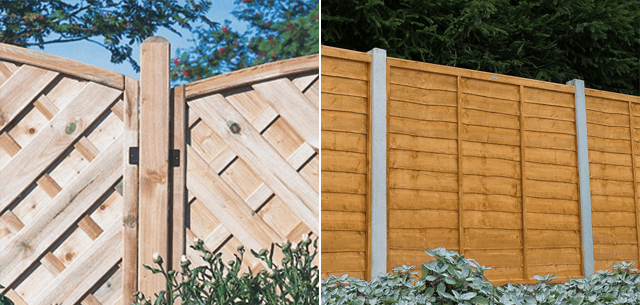

Wooden or Concrete Fence Posts
As they are inserted into the ground, wooden fence posts should always be pressure treated. The benefits are their aesthetic appeal and that they are more forgiving than concrete if your measurements are a few millimetres out. They are also lighter and easier to handle than concrete posts.
Concrete fence posts are stronger and more durable than wooden ones. Other than the occasional wipe down to remove algae, they are maintenance free. They might not have the natural charm of wood, but concrete fence posts are the most reliable option.
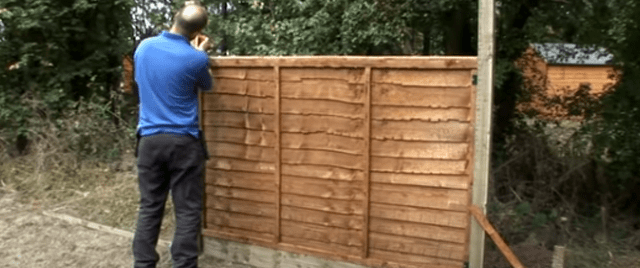

Height of Fence Posts
At least 2ft or a third of the fence post (whichever is greater) should be in the ground, so select one that is at least 2ft higher than the fence panel.
When using a gravel board, this raises the height of the fence panel, so a fence post that is a minimum 2ft taller than the combined height of the fence panel and gravel board is required.
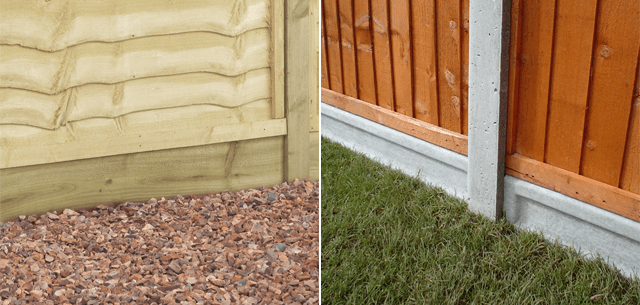

Gravel Boards
Gravel boards are designed to protect the base of the fence from ground moisture, so increasing its lifespan. They also help take the strain off any fixings, as well as adding an attractive finishing touch to the fence run.
Like with fence posts, gravel boards are made either from pressure-treated wood or concrete. It is particularly important to use them when purchasing dip-treated fence panels, which are more prone to rot than pressure-treated alternatives.
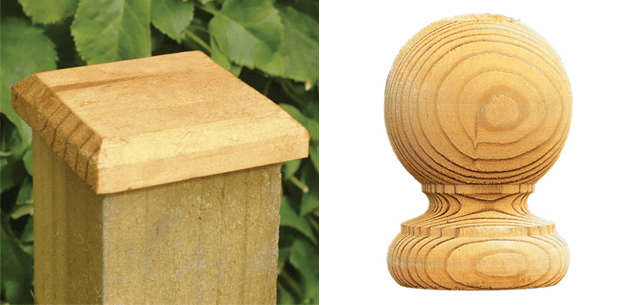

Post Caps and Finials
Aside from the part of the fence post that goes into the ground, the top is the most vulnerable to rot and fungal decay. This is because it is the most exposed to the elements.
As they provide fence posts with an extra protective layer, this makes fence post caps an essential investment.
Finials are a decorative element and should be used in conjunction with post caps for full protection.
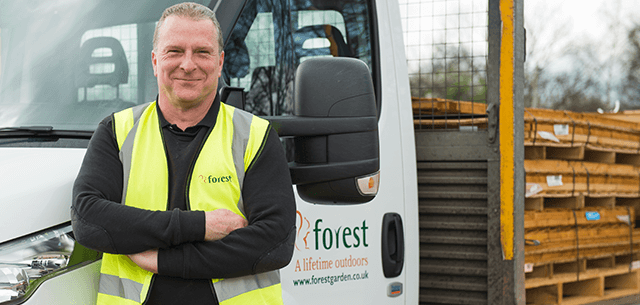

The lead time listed on the product page indicates when the fence panel, fence post, gate or fencing accessory will be available for dispatch. During that time period, the manufacturer will contact you directly to arrange the delivery date. Most of our fencing is available with convenient Pick-a-Day delivery.
Any changes made to an order can cause the delivery date to change. Check you have included everything before ordering. Use our handy checklist in the section above to help.
Delivery is free for orders above £300 on the vast majority of Shedstore’s fencing products. However, some remote postcodes will incur surcharges. Use the postcode checker on the product page to check if surcharges will apply to your delivery.
Fence Installation
Before you start, give your neighbour a courtesy call and, of course, ensure that you are installing the new fence on the garden boundary that is legally yours. You can find this out by reading your property’s title deeds.
If installing a fence taller than 6ft (not including the height of the gravel board) in your back garden, contact your local council beforehand to ensure that you’re not falling foul of planning permission laws. The same applies for a front garden fence over 3ft tall (again, not including gravel boards), when it is positioned next to a highway used by vehicles.
You can watch a variety of helpful guides to installing a garden fence on YouTube. But here are some top tips for different issues:
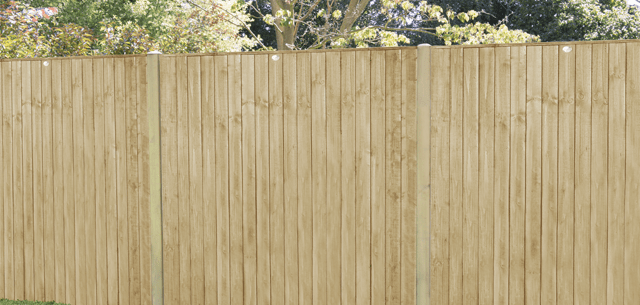

Installing a Fence on Sloping Ground
When installing a fence on sloping ground, all panels must be kept level so all fence posts should be as tall as the higher panel of each adjacent pair of panels. Gravel boards are essential. Depending on the severity of the slope, they might need to be partially inserted into the ground. The result will be what is known as a ‘stepped’ fence.
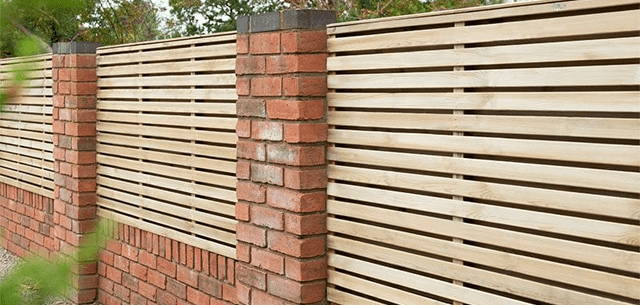

Fencing Mounted on a Wall
To mount a low-level fence panel onto a wall, use post shoes to bolt it down. This is obviously dependent on the wall being thick enough to accommodate the shoe. If not, bolt the fence posts to the side of the wall or into the ground next to the wall.
For walls with brick columns, use arris rails between the columns and individual boards, rather than full fence panels, to complete the fence run.
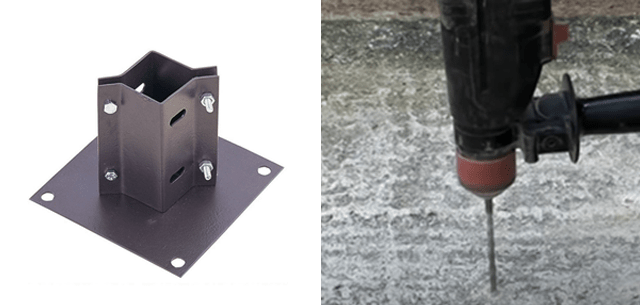

Installing Fence Panels on a Concrete Surface
Any type of fence panel and fence post can be used but the posts should be bolted to the concrete using fence post shoes. These are also known as bolt-down fence post supports.
The shoes are bolted into the concrete. The posts then sit in the shoe and are secured by a strong nut and bolt fixing.
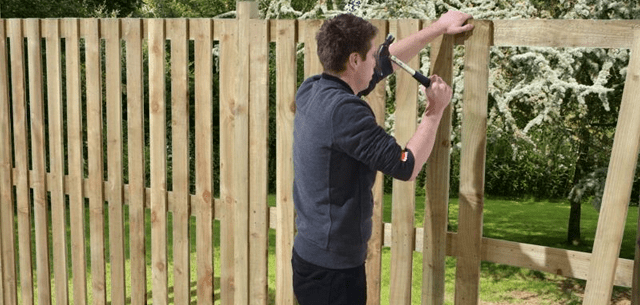

Fencing on Uneven Ground
When the ground is particularly uneven, it is best to use packs of fencing boards, rather than standard fence panels, to create a bespoke fence run.
Fencing boards combined with arris rails will give you the most flexibility.


Our friendly, UK-based customer service team are available to help answer any questions. Call the team on 0333 003 0518 or use the Live Chat option onsite.
Take a look at our bestselling fences below or view all our garden fencing products here.

















